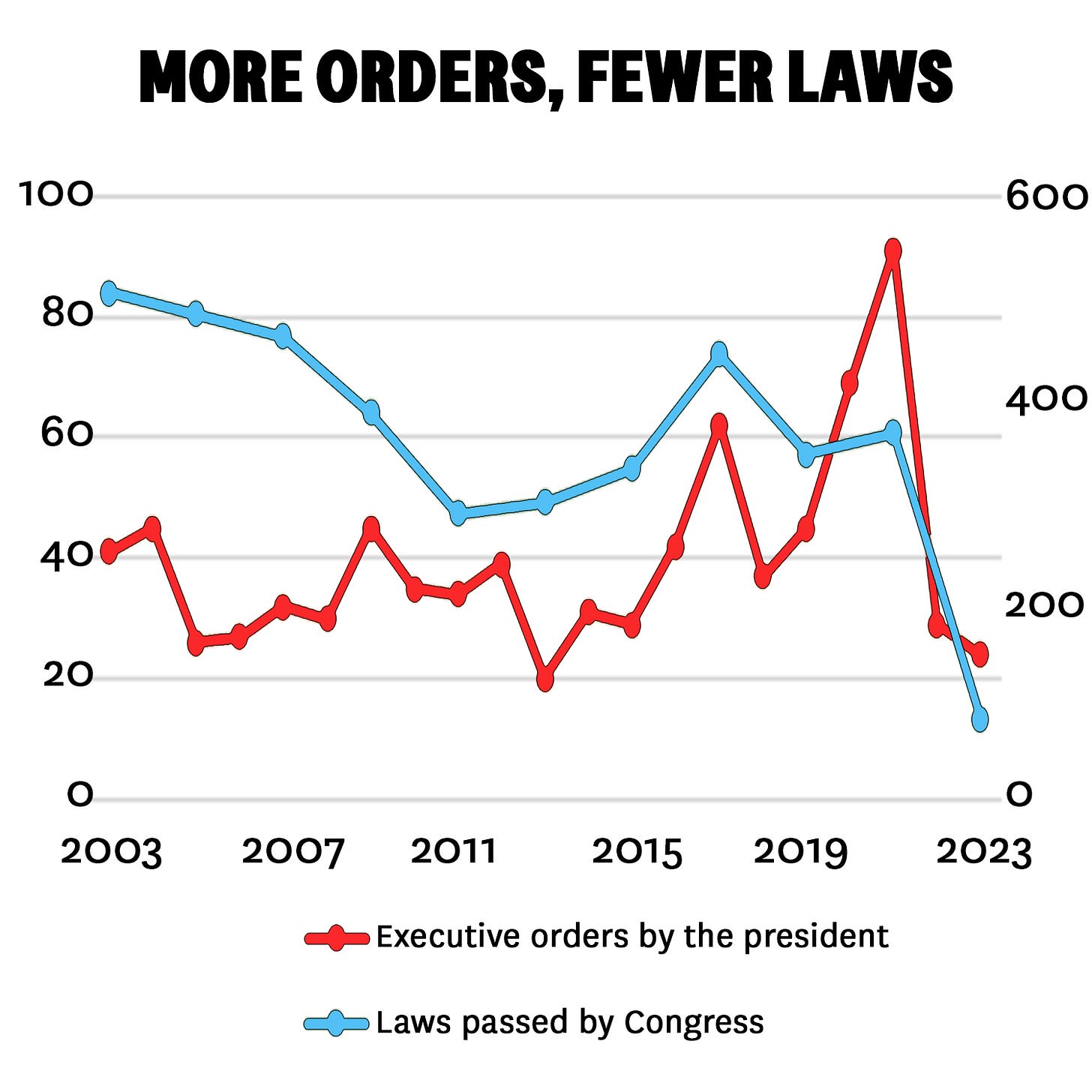Restoring the Balance: Why Congress Must Reclaim its Role in Governing America
As Election Day draws closer, political analysts are trying to read the tea leaves and predict how House and Senate races across the country shake out.
But in recent years, more of the government’s business is being driven by the White House instead of Capitol Hill.
Much of this can be attributed to Congress's growing dysfunction and inability to govern effectively. The 118th is the least productive Congress in recorded history, passing fewer pieces of legislation than any Congress in at least 50 years.
At the same time, Presidents have increasingly turned to executive orders to achieve their political objectives. Executive orders are directives from the President managing the federal government’s activities without any input from Congress.
Both parties are to blame for this trend. Donald Trump signed more executive orders per year than any President since Jimmy Carter, while Joe Biden’s 77 executive orders in 2021 were the most in a single year since 1979.
The chart below shows executive orders (red) rising while Congressional legislation (blue) falls.
Why does this matter?
First, executive orders work against the checks-and-balances system that ensures democratic accountability. Instead of members of Congress from across the country and political spectrum working together to find solutions most Americans can agree on, executive orders allow one powerful individual to impose their will on the whole country without oversight.
Take immigration and border security. According to polling, immigration is one of the top two issues for voters in this election, and yet Congress has shown no capacity to deal with it. Any major changes this century have come from executive action: President Obama’s DACA program to provide legal status for Dreamers, President Trump’s “Muslim Ban” and “Remain in Mexico” policies, President Biden’s continuation of Title 42 during the pandemic; none of these major decisions were made by our representatives in Congress.
Second, executive orders are often overturned by later Presidents, creating instability in federal governance.
From 2000 to 2020, over 800 executive orders were issued, and roughly 22 percent of them were revoked or superseded by subsequent orders. When a new President takes office, they often rush to reverse their predecessor’s orders. For recent Presidents’ first year in office, here’s how many of their new orders revoked previous orders:
Joe Biden: 38%
Donald Trump: 29%
Barack Obama: 27%
George W. Bush: 30%
This constant back-and-forth is unsustainable. To make significant and enduring change in this country, you need buy-in from both parties in Congress.
The big challenges America faces – a spiraling national debt, the rise of China, and a declining belief in the American Dream, to name a few – cannot be solved by one-party rules that get reversed every four years.
It's time for Congress to reclaim its authority from the President and restore the checks-and-balances that are fundamental to our democracy.



The best outcome we may wish to expect is a divided government. In the present political environment, if both House and Senate as well as Presidency go to one party, there is a chance that if Democrats are the winners, we'll first get elimination of the filibuster, then get an overhaul of the SC, followed if they are really audacious, by admitting Puerto Rico and Washington DC as states. We will have to hope for n ~50-50 split in the Senate so that the moderate senators can block passage, which is all that much more difficult now that Sinema and Manchin will be gone. All the while our deficit will keep increasing. Harris as President, 51 - 49 Senate (R-D) and the House up for grabs , and continued budgetary and legislative backlog and bickering may be the best outcome for the country, even with Executive orders still being ordered by the sitting President.